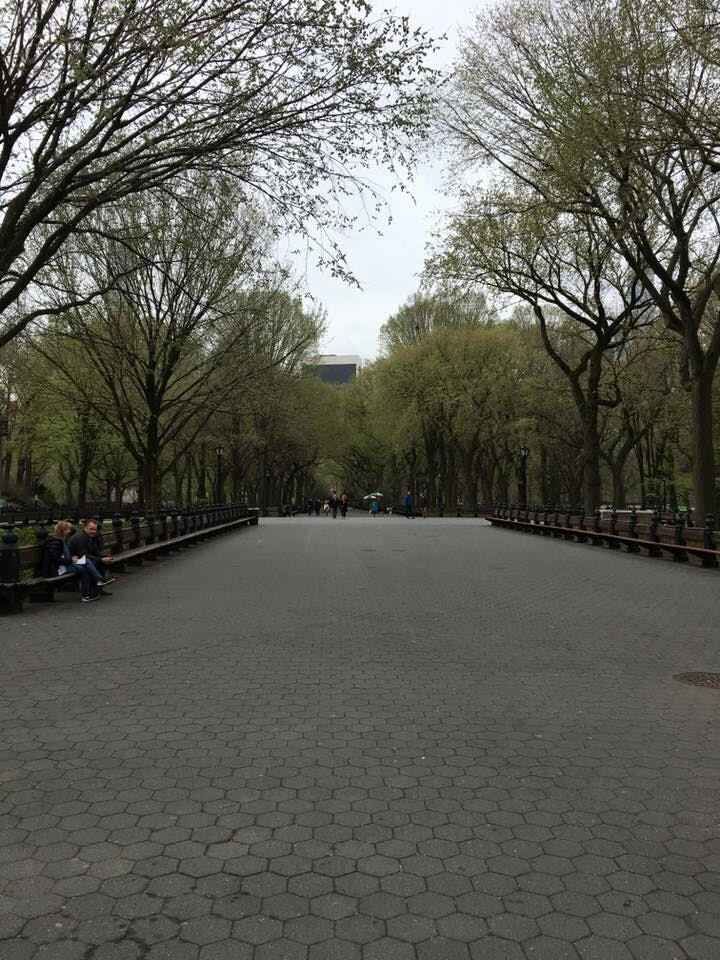New York is a city characterized by the lack of privacy and amount of people on the streets, one would be lucky to have the opportunity to move around without bumping into someone. This image, A Rainy Day at Central Park, offers a rare occasion in the Big Apple, distance. Looking at this photo, utilizing semiology and psychoanalysis, we can see that it contains all of the signifiers that can explain why it was such an empty day in Central Park.
Starting in the foreground of the image the tiles are slightly wet meaning that the photo was taken sometime after it was raining out. This is backed up by the drooping branches of the trees or the grey in the sky all of which are signifiers that it was at one point raining before this image was taken. Moving on to the people who are in the image, there is someone in the background with an umbrella, this signifies that it is still sprinkling out, and we can assume that it is rather cold because everybody that can be seen in the picture is wearing a coat.
Going off of the idea that it is a rather dull and gloomy day in this picture we can then ask the question. Why is there anybody in the park on a day like this? Focusing on the couple to the right we can see that the person closest to the camera has a paper in her hands with her legs crossed in a fashion that is aimed away from the individual they are with though they seem to be listening intently. The person next to them is leaning forward saying something fashioned in a relaxed and open manner facing more towards their companion. From this we can conclude that they are having an informal conversation, which is contrasting to the stereotypes about New York, the stereotypes being about a lack of personal communication.
If we look at the background of the image it is clear that nearly everyone shown is walking with a companion adding to the case for contrast against their stereotypes. Going back to my question, it is very possible that the people at the park are there because it is a chance to get away from the crowded streets of New York and take a break or have a conversation with a friend without someone being nearby to hear. In a city where people are shoulder to shoulder more often than not it brings to attention the idea that there are still introverts in that society that need their breaks.
Humans are social beings, but the question that remains to be answered is “how social are we?” We often talk about New York as busy and crowded but it is often not contemplated about where and when people go out for alone time. New York is also seen as a place that could very quickly turn dangerous just due to the immense amount of people, but this image challenges that narrative. Looking at the pairs who are just leisurely having conversations it seems as if this insanely crowded city is just as safe as a small town of just a few thousand. It is hard to find images that are in sharp contrast to the stereotypical narrative of New York, but those stereotypes leave out a large portion of people who don’t fit in with those normalities taking away their voice and personalities allowing for these ideas to spread even further without the voice of opposition.

Commentary on Rachel Tanur's Works: Cuban Boys